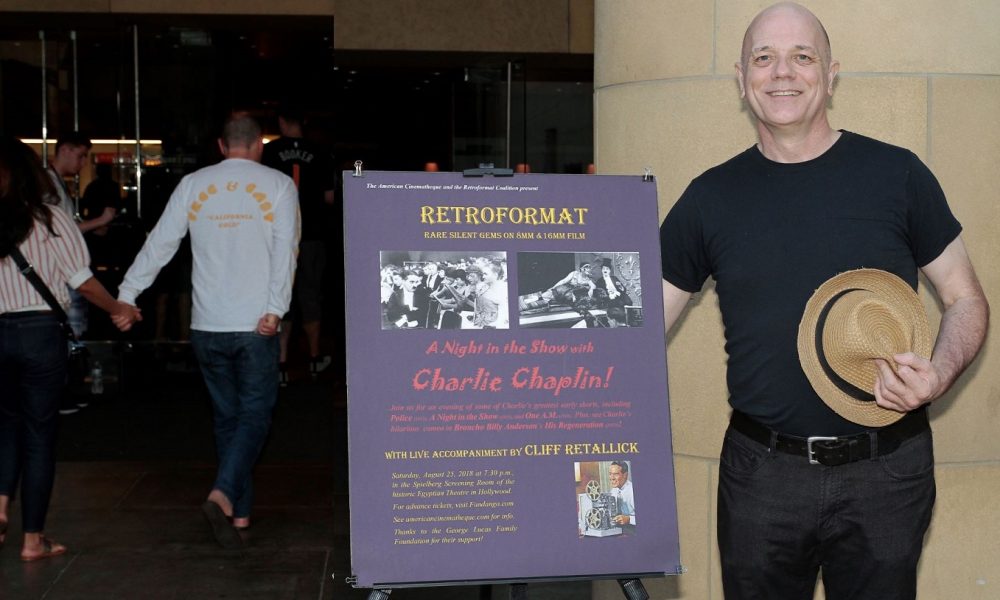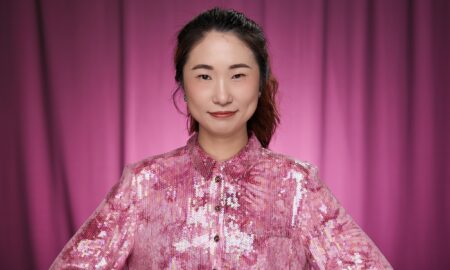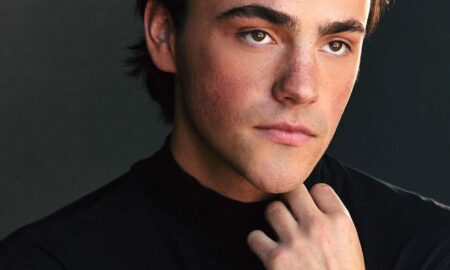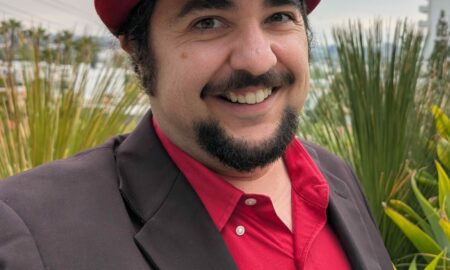

Today we’d like to introduce you to Tom Barnes.
So, before we jump into specific questions about the business, why don’t you give us some details about you and your story.
The idea for the Retroformat Coalition, a new nonprofit dedicated to exciting passion about the art and history of silent film through public screenings with live musical accompaniment, dates from a conversation I had with the great film preservationist David Shepard, less than a week before he passed away. I had known David for over twenty-five years, and when I heard he was very ill, I located him in an intensive care unit in Oregon.
His voice sounded weak and distant, and he seemed to gulp air between phrases. “Tom, it’s good to hear your voice. There are two film festivals I started in Northern California; one is in Redding and one is in Chico.” I had no idea why he was talking about Chico and Redding, so I had a sinking feeling he didn’t know what he was saying.
But, as always, he was fully in charge. He had just learned that his remaining time would be short, and he spent his last days busily directing his affairs from his hospital bed. He wanted me to do what I could to help carry on the film festivals he had single-handedly programmed for many years; he liked the way I programed my silent film series, Retroformat: Rare Silent Gems on 8mm and 16mm Film, for the Egyptian Theatre in Hollywood, even lending me his own 16mm prints on occasion, and he wanted to be sure his Chico and Redding silent film festivals would continue. I promised I would do what I could, and at his direction I contacted Dorothy Bradley of the Niles Essanay Silent Film Museum, where he was leaving the bulk of his personal collection of more than 9,000 16mm and 35mm prints, and Debra Lucero, Executive Director of the Shasta County Arts Counsel, and offered to help in any way I could.
The last time I spoke to him, just two days before his passing, I asked what he thought about a possible silent film series at the Egyptian Theatre, using the collection he was leaving to the Niles Essanay Museum. His response was, “Of course.” In order to make the proposed series a reality, I soon realized that there needed to be a new nonprofit organization.
I had first become aware of David in the 1970s, when I was a customer of Blackhawk Films, an amazing company in Davenport, Iowa that sold beautiful “home movie” 8mm and 16mm prints of films from the silent days. He was a brilliant man who became one of the world’s most important film preservationists, responsible for saving and restoring thousands of silent and other films, and, just as importantly, making them accessible, first through his work at Blackhawk, and then through his own company, Film Preservation Associates, working tirelessly to release them in video and then digital editions.
My own journey as a film collector had started when, as a pre-teen growing up in a small town in Tennessee, I discovered the 8mm ten-minute “headline” editions of horror films in the back pages of Forrest J. Ackerman’s Famous Monsters of Filmland magazine. Our public library also held a small number of Blackhawk 8mm films; I’m pretty sure the first one I checked out was the 1911 Dr. Jekyll and Mr. Hyde. I was less interested in the library’s other titles at first, but I soon got around to discovering Chaplin, Laurel and Hardy, and even Mary Pickford.
It wasn’t long before I ordered my first full length film directly from Blackhawk, an almost-complete, standard 8mm print of F.W. Murnau’s vampire masterpiece, Nosferatu, which I paid for by mowing lawns and raking leaves. As a bonus, my purchase made me eligible to buy a sale item for only $1.00, a Stan Laurel one-reeler from 1921 called Man About Town.
By the time I was 18, I had amassed around 100 films by pioneer filmmakers in multiple genres. It wasn’t long after that that the first VCRs became available, and the “home movie” business became a thing of the past. My 8mm projector and film collection quickly seemed antiquated and were boxed up and put away for many years.
Flash forward to the early days of the personal computer. I discovered via the internet that some folks were selling off their old 8mm collections and, out of a nostalgic impulse, I bought a William S. Hart western from 1917, The Narrow Trail, a fortunate choice, as it turned out, because it was an excellent film, beautifully restored by Blackhawk, and it completely re-hooked me.
I invited some friends over for a screening in my apartment off Venice Boulevard; this became a monthly party that just grew. Soon we were squeezing 25 and more passionate silent movie fans into my living room. My collection also grew, and at last count I had more than 1,000 rare silent films on 8mm, Super 8 and 16mm, stored on shelves, in dressers and filing cabinets and stashed all over my apartment.
In late 2009, I began Retroformat: Rare Silent Gems on 8mm and 16mm Film at the historic Egyptian Theatre in Hollywood because of the dearth of regular silent movie screenings in Los Angeles, a void that had grown since the Silent Movie Theater on Fairfax ceased regular silent film programming. Ever since I moved to Los Angeles, I had volunteered for the nonprofit American Cinematheque, an amazing organization that programs film retrospectives year-round and eventually came to own the Egyptian Theatre as well as the Aero Theatre in Santa Monica. I approached them with the crazy idea of a silent movie series using my “home movie” prints in the smaller Spielberg screening room of the Egyptian. No one really thought it would work, including me, but they were willing to try because it wouldn’t them cost anything and they could keep all the proceeds from ticket and popcorn sales.
A dozen people attended my first screening when I ran The Narrow Trail in December 2009, mostly my friends. Retroformat has built up a loyal audience since then, and now it’s not uncommon for our shows to sell out, and my friends have sometimes been turned away because they waited until the last minute. My approach to programming, regularly alternating well-known films and artists with the obscure, in addition to constantly switching between comedy and drama, has worked extremely well. The well-known attracts interest and attention, and the obscure excites curiosity. The two work hand-in-hand.
With the formation of the new nonprofit Retroformat Coalition, we plan to greatly expand our programming at the Egyptian Theatre to include a series programmed from the collection at Niles Essanay, as mentioned above. In addition, I’m very excited that at least 50% of our activities will directly target students from grammar schools, high school and colleges.
Great, so let’s dig a little deeper into the story – has it been an easy path overall and if not, what were the challenges you’ve had to overcome?
Starting a new company continues to present challenges. As of this writing, we are still waiting to receive official nonprofit status from the IRS, but I am optimistic that will come by the end of the year. It’s been a learn-as-you-go situation, but I’ve been lucky that I have many friends who believe in the idea, and I’ve been surprised by the enthusiasm expressed by people I barely know. I’ve gotten some great advice as I’ve gone along.
Dorothy Bradley, President of the Niles Essanay Silent Film Museum, has been amazingly generous with her time. That organization started pretty much the way I’m starting the Retroformat Coalition; Dorothy enrolled a group of people into the idea of a company dedicated to screening silent films in the Northern California area, then bought the Nolo book How to Form a Nonprofit Corporation in California and followed it step by step. In their case, they eventually they decided they needed a central location, which led to the establishment of the museum.
I’ve also been fortunate in managing to attract some amazing board members, including Alexander Payne, the great writer/director and one of my idols; Barbara Smith, Executive Director of the American Cinematheque; Sebastian Twardosz, an accomplished producer and professor of film at USC; Dino Everett, archivist of the Hugh Hefner Archive of the Moving Image at USC and an amazing film collector in his own right; Jeffrey Masino, founder and owner of Flicker Alley, a major DVD/Blu-ray distributor of silent and other film; Iain Kennedy, Emmy-nominated producer, writer, editor and documentarian; and two of my best friends, digital imaging specialist, film collector and projectionist extraordinaire David Slaughter and author and expert on Hollywood history Karie Bible. One thing we all have in common is that we knew and were inspired by David Shepard.
At this point, we do not foresee opening our own museum, although the future of the organization is an open set of possibilities. Being in a huge area like Los Angeles, having a portable setup has its advantages. I have a fleet of 8mm, Super 8 and 16mm projectors, and three screens ranging up to eight feet wide, and Cliff has his electronic keyboard, so we are prepared to take our shows to diverse settings, from homes to schools to libraries to museums, wherever we can find a dark enough space.
In fact, the City of Santa Clarita hired Cliff and me for their Arts Walk on a couple of occasions, setting us up at night in a black tent right off the sidewalk, with room for a dozen chairs, a couple of projectors, a screen, and Cliff’s keyboard. We ran continuous screenings, and people were free to wander in and check out a short film or two all night. One thing the new Retroformat Coalition may do as we are getting established is to purchase our own black tent and offer our services to the many art festivals in and around Los Angeles.
Looking back, getting my 8mm/16mm series off the ground at the Egyptian Theatre had its share of challenges, too. People were skeptical about a mostly 8mm show, but I put a lot of research and work into acquiring the right projectors and screens in order to get the best possible image quality out of my carefully cleaned and restored prints, and word finally started getting around that the quality of our presentations was very high, a fact which still surprises a lot of people when they attend for the first time. I’ve actually had people look at our setup and inform me that 8mm won’t “throw” that distance. Then, they’ve been stunned by the bright, crisp images these beautiful prints can produce.
In the beginning, music was an issue, too, as silent films were not intended to be projected in silence, but there was no budget for paying a musician to accompany the films. In fact, there was no budget for anything, and for the first couple of years it was a one-man operation. I have a talent for finding good pre-recorded music on CDs to accompany the films, but that set-up still made the whole show seem kind of rinky-dink, and for a silent film program to be truly authentic, it needs the added dimension of live music.
I was lucky to become acquainted with Cliff Retallick, who accompanies silent film screenings for the UCLA Film Archive, the Silent Society and other prestigious venues.
You can’t just hire any musician to play for silent films. It requires a special talent and set of skills, and there is no training ground. Cliff is undoubtedly the best practitioner of this very specialized art form in our area. His style is unique and yet authentic to the period the films come from, although, unlike many accompanists, he doesn’t rely on a cache of traditional themes or use a lot of popular tunes from the teens and twenties. He does have a number of beautiful unpublished melodies that he has written himself over the years that he sometimes incorporates into his improvisations, but his performances are otherwise entirely extemporized and stylized in a way that is wedded to the action and visual rhythm on the screen in a very special way.
When Cliff saw that my Retroformat screenings were dedicated to keeping the art form silent film alive, he wanted to be part of them. Had it not been for his contribution, Retroformat would have never built up the audience it has now, and there would be no nonprofit Retroformat Coalition. Anything the new company is able to achieve will have been made possible by his generosity all these years.
Alright – so let’s talk business. Tell us about The Retroformat Coalition – what should we know?
Our mission is to provide education and excite passion about the unique art form silent film, through screenings of historic films for in-person audiences with live musical accompaniment, the original form of moving image presentation.
Today, as a culture we are immersed in the moving image from the moment we wake up. We carry it around in our pockets, we rely on it for news and information about the world around us, and we interact with it in ways that would have been unimaginable to the silent movie audiences of 100 years ago. It is crucial that we understand the way the medium was perceived and experienced by audiences when it was a new and even miraculous thing.
The fresh experience of being part of a live audience seeing these pioneer works reminds us of the moving image’s potential as a tool for the good of mankind, the idea that excited its inventors and first audiences a hundred years ago. We also get to witness the creation of filmic language first hand, and this is especially valuable for new and future filmmakers, as it broadens and deepens understanding of the art form’s potential.
There are so many forms of film-like media now that it is important for clarity’s sake to refer to the moving image, but the Retroformat Coalition is concerned specifically with film, its original and we believe most beautiful form. We want to remind people of film’s uniqueness as a medium and what sets it apart from its video and digital counterparts. In my Retroformat screenings at the Egyptian Theatre, the projectors are clicking and whirring in back of the room with the audience, like they were in the earliest film exhibitions, and people are often curious about the machines and want to photograph them and be photographed with them.
Retroformat has also had some distinguished guests. It especially meant a great deal to me when the legendary author and film historian Anthony Slide offered to do a wonderful presentation, introducing Alice Howell and other little-known women who were comedy stars of the silent era, whose work we were happy to be able to represent.
On another memorable occasion, Paul Dooley, a wonderful actor who has had a long and distinguished career (among other things, he’s a veteran of the films of one of my favorite directors, Robert Altman), came to Retroformat and performed a moving tribute to Buster Keaton, with whom he appeared in a television commercial in the 1960s, as an introduction to a night of Keaton’s short films.
A crucial part of the new Retroformat Coalition’s mission is that at least 50% of our activities will directly target young people, particularly students from the grammar school through college levels, and we’ve discussed doing shows at children’s hospitals as well. I know from my own life that when you awaken a passion for art in a young person, whether in the form of film, literature music, dance, oil painting or what have you, it can truly be life-changing.
Having grown up in a small town in Tennessee, I feel especially lucky and grateful now that when I was really young my interest in theater and dance was encouraged. My excitement about monster films when I was 11 or 12, which my parents tolerated, was fostered through the publication by Forrest Ackerman, leading directly to my love of silent films. My passion for silent film has informed and enhanced my love of the entire range of moving image media.
Is there a characteristic or quality that you feel is essential to success?
A lot of people have passion, but what has gotten me to the point of starting a brand new company is persistence, a quality I did not have when I was young. But persistence comes from determination. It just goes to show that, with determination, anything becomes possible.
Contact Info:
- Address: The Retroformat Coalition
3819 Sawtelle Boulevard, #D
Los Angeles, California 90066 - Website: Retroformat.org
- Email: [email protected]
- Instagram: Retroformatfilms
- Facebook: Retroformat Silent Films Los Angeles
- Twitter: @retroformatfilms








Image Credit:
Photos of Tom Barnes, Cliff Retallick, Marie Retallick, Paul Dooley, by Mario Jennings, Marie Retallick and Cliff Retallick.
Getting in touch: VoyageLA is built on recommendations from the community; it’s how we uncover hidden gems, so if you know someone who deserves recognition please let us know here.




















